What you need to know about baking with pandan
How to put this classic and colorful Singaporean staple to use.
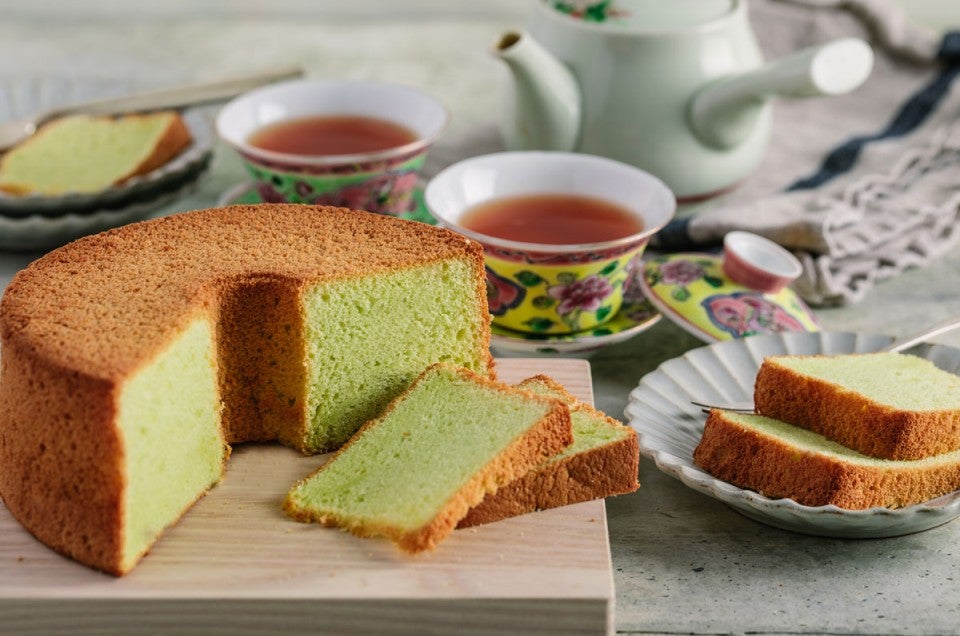


Our regular column featuring 5 things you should know about baking: from tips to tools to questions you're always asking yourself in the kitchen.
* * *
As a Singaporean living abroad, there’s one recipe I always go to when I miss the flavors of home: Pandan Chiffon Cake. This light green, pillowy soft cake is typically sold by the slice in almost all local bakeries across the island, and it’s a favorite from my childhood. Christopher Tan, a cookbook author and culinary instructor who has been teaching pandan cake classes for a decade in Singapore, remembers the fluffy treat being a party and potluck staple during his childhood in the 1970s. Since then, "Its popularity has not waned,” he says.
Green-tinted desserts in Singapore are typically made with pandan and are often presented at holidays, so the sight of sweets with a light green hue evoke memories of celebrations back home. Indeed, if there’s one plant any Southeast Asian dessert chef can’t live without, it’s the pandan leaf. Used in both savory and sweet dishes in Singapore and across the region, this herb is now slowly gaining traction in the United States. My chiffon cake is a great starting point to begin using pandan in your baking, but if you want to venture beyond this one recipe, here’s what you need to know about baking with pandan.
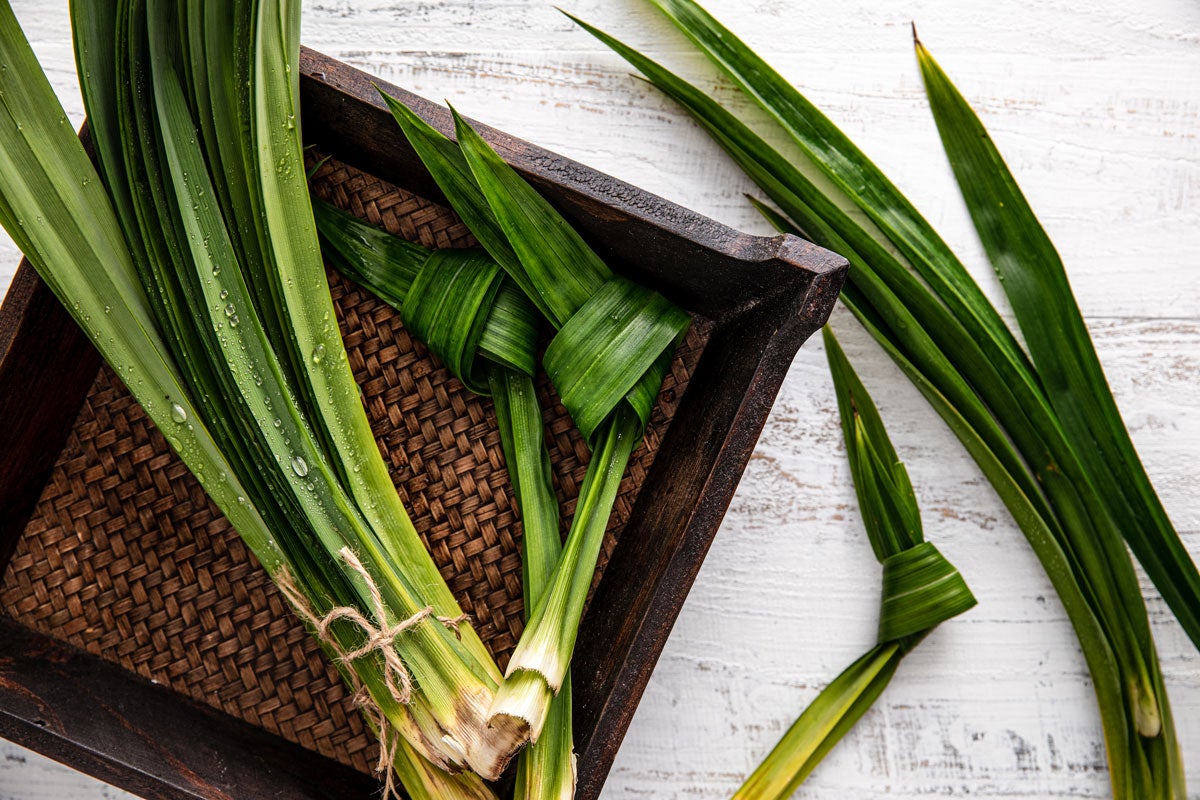
Pandan has been cultivated for home cooks in both South and Southeast Asia for centuries and imparts flavors of vanilla, coconut, and rose. This grassy plant, with its long blade-like leaves, is no longer found in abundance in the wild but is easily grown at home with just a little bit of care.
The use of pandan in savory dishes like the iconic Chicken Rice provides a subtle but important herbaceous note in the background, yet the aroma of pandan truly shines when used in Singapore’s most popular traditional desserts, such as Pandan Chiffon Cake.
Pandan can be bought and baked with in many different formats:
Fresh or frozen leaves: Pandan plants are easily available for purchase online and require very little maintenance if you live in a tropical climate. Alternatively, frozen pandan leaves can be purchased from most Asian supermarkets in the United States. Pandan leaves are commonly steeped in liquids to impart their subtle aroma and add a very mild shade of green to your dish. Fresh leaves can be stored in the refrigerator for up to four days when wrapped in a damp towel. They can also be frozen and stored for up to four months.
Pandan juice: Pandan juice is made when fresh or frozen leaves are cut into 1” pieces and placed in a food processor along with a small amount of water. They’re blended, then strained through a fine-mesh sieve or a nut bag. The resulting juice is used in recipes where batters can accommodate a large amount of liquid. Fresh pandan juice can be stored in an airtight container in the refrigerator for up to three days.
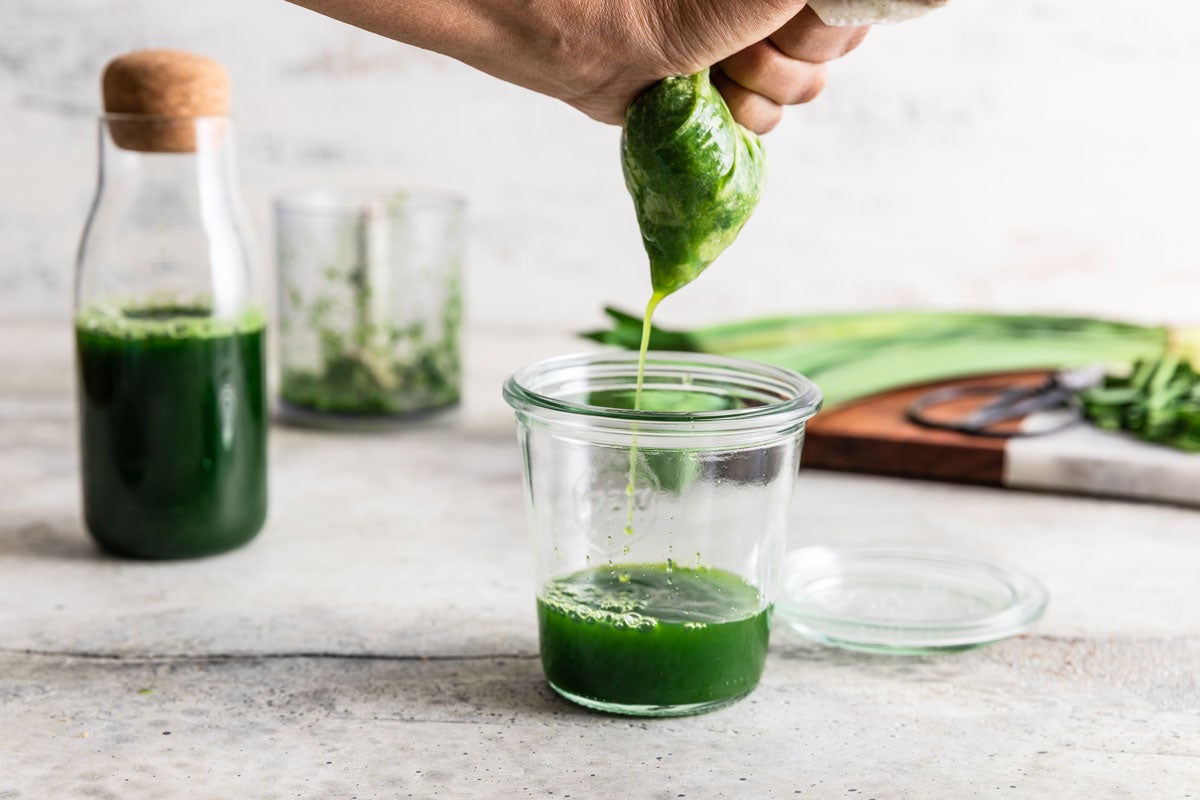
Pandan extracts and pastes: Fresh pandan extract can be made from pandan juice that's been stored in the refrigerator for 24 hours. During that time, the pandan juice will naturally separate if left undisturbed. Carefully skim the watery liquid at the top to leave behind the thick extract. The fresh extract must be used within a day.
Bottled pandan extracts and pastes can be stored in the pantry for months and have become easily available online, but you’ll want to pay attention to the ingredients on the label when purchasing. While some brands are natural and only contain pandan and water, other brands contain artificial flavorings and green food coloring to mimic the green color of pandan juice. Keep in mind that artificial pandan extracts and pastes will turn your baked goods a stronger shade of green than if you were using fresh or frozen leaves and natural extracts.
Pandan powder: Pandan powder has been a recent addition to the pandan-flavored offerings available commercially. It’s typically sold in two varieties — freeze-dried leaves that have been pulverized, and pandan juice that's been evaporated. The pulverized freeze-dried powder isn't fully dissolvable, unlike the evaporated powder, so it’s recommended that you add water to the freeze-dried powder and strain it before use. That said, some freeze-dried powders are finely ground enough that manufacturers may suggest using the powder directly in your recipe without having to mix it with water first.
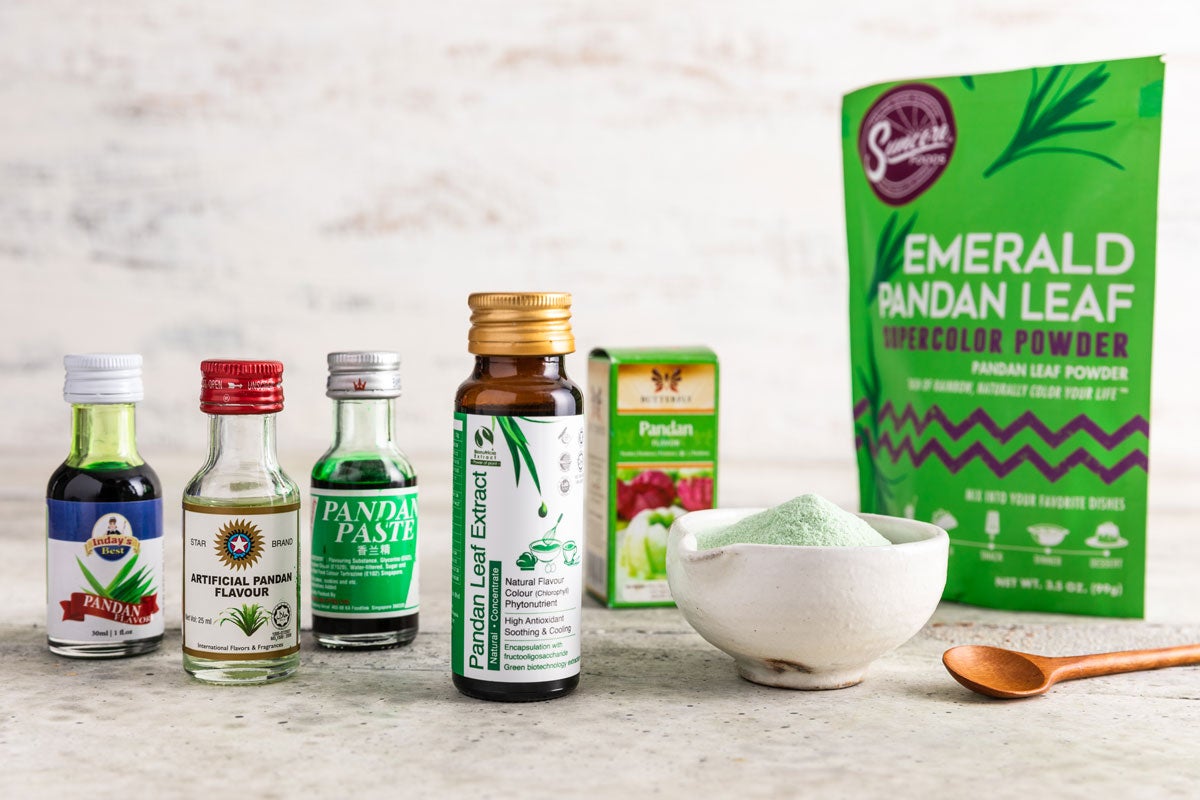
Fresh pandan leaves are almost always the first choice for cooking savory dishes; while leaves, juice, extract, paste, and powder can all be used for desserts, depending on the recipe you’re making. Personally, I love the convenience of using pandan extract, as it typically works well for all types of baking. These bottled extracts store well in a pantry for several months, but if you find you aren’t using the natural extracts as frequently as I do, they can be stored for longer in the refrigerator.
Pandan leaves have similar aromas to vanilla, rose, coconut, and sometimes even almonds. In addition, the flavor compounds in pandan are similar to that of fragrant basmati rice, and in certain communities pandan is cooked along with plain rice to emulate the flavors of the more expensive basmati. Pandan blends seamlessly with the flavors of glutinous rice, coconut milk, and coconut palm sugar — this traditional combination of ingredients is often found even in modern takes on traditional desserts across the region.
That said, pandan is compatible with a variety of flavors. In particular, pandan can be used as a substitute for vanilla whenever a recipe calls for it to add another dimension of flavor to a dessert.
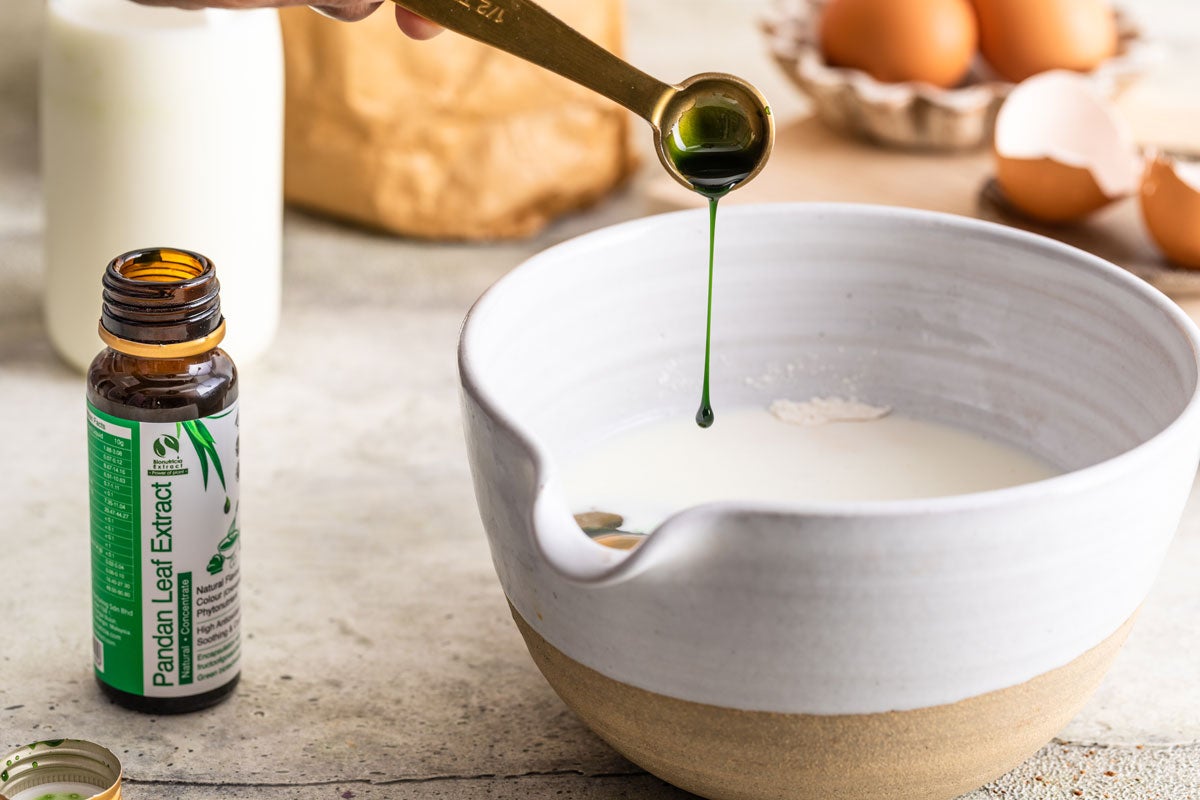
For recipes such as panna cotta, crème brûlée, and custards that call for infusing milk or liquids with flavors such as vanilla, instead add a few knotted leaves of pandan during the steeping process.
For cakes like the Pandan Chiffon Cake and other baked goods that have a wet batter, the best choice is pandan juice. If you can’t find frozen or fresh pandan leaves to make pandan juice, you can easily add store-bought natural pandan extract, paste, or powder to these recipes.
A 1:1 substitute of pandan extract or paste for vanilla extract is usually appropriate, but when using pandan for the first time you may want to halve the amount of pandan to test the color and flavor that results. As an example, in recipes like pancakes, crêpes, and waffles I typically add a small amount of natural pandan extract to the batter (which turns it slightly green) in place of vanilla.
For powder, follow the manufacturer’s suggestions for how to use in baked goods, as methods vary depending on the type of powder. In most cases, powder can be added directly to the recipe, keeping in mind that there might be flecks of green throughout your baked goods (especially if the powder you’re using isn't fully dissolvable).
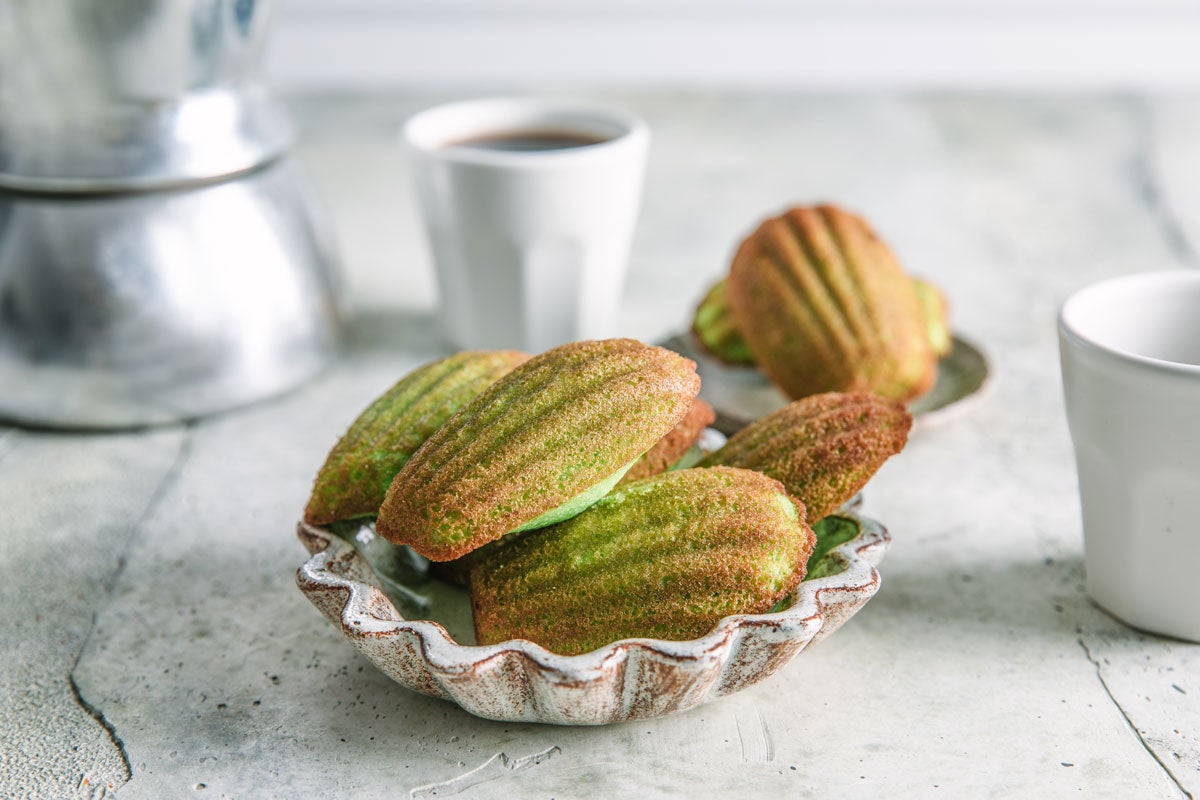
There are some great recipes from King Arthur that work particularly well with natural pandan extract. The Best Waffles Ever and Simply Perfect Pancakes are a delicious start. For an afternoon treat, I recently swapped out the vanilla for pandan extract in Vanilla-Scented Madeleines to create a pandan-infused version. It was a delightful reminder of Singapore, to be enjoyed with an afternoon cup of herbal tea!

